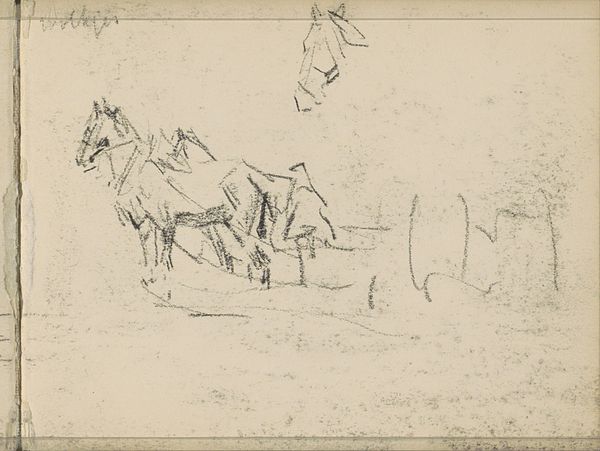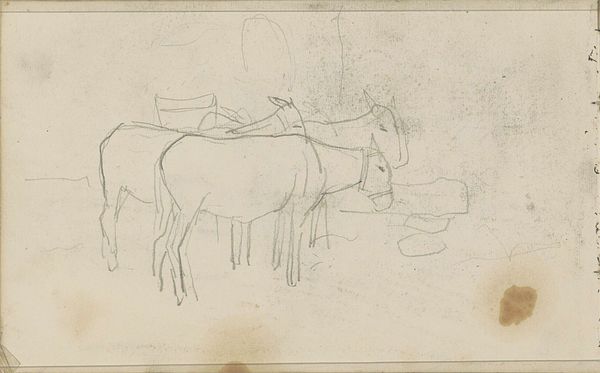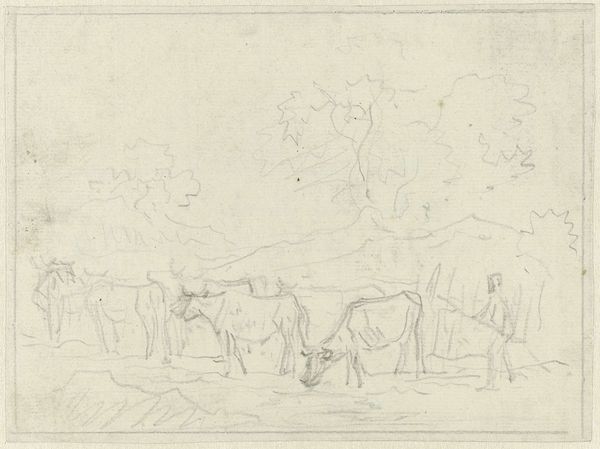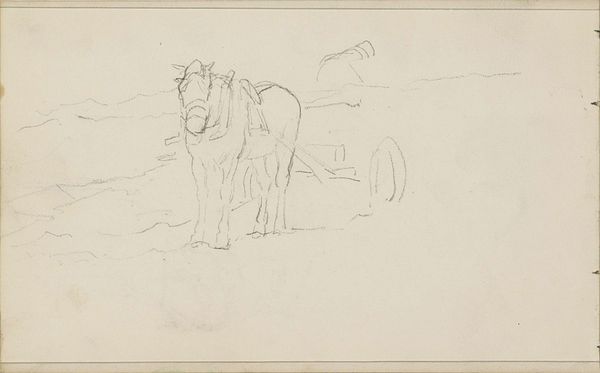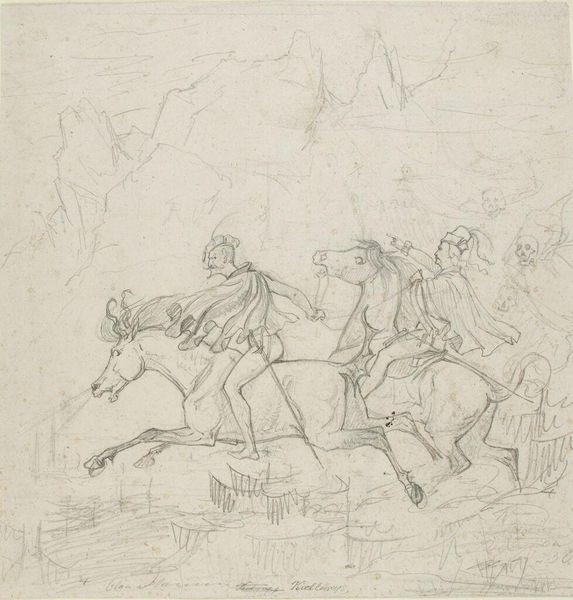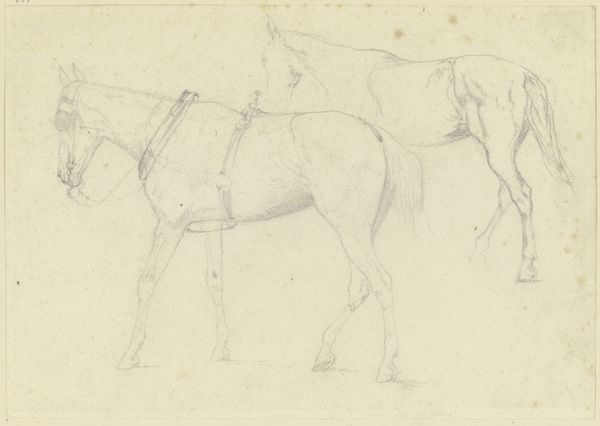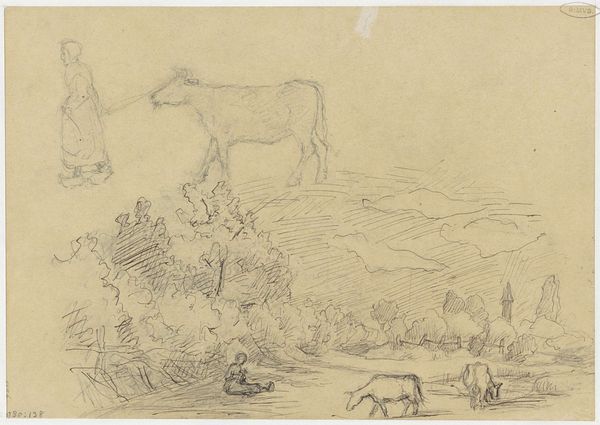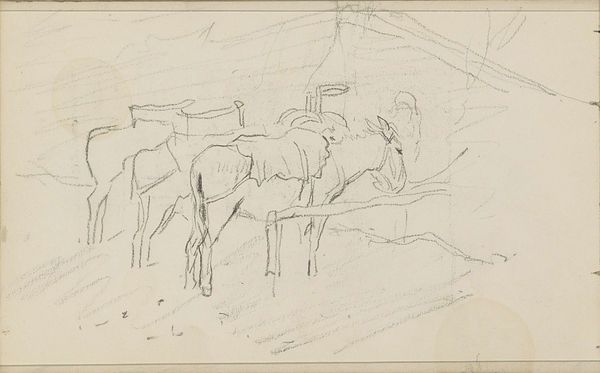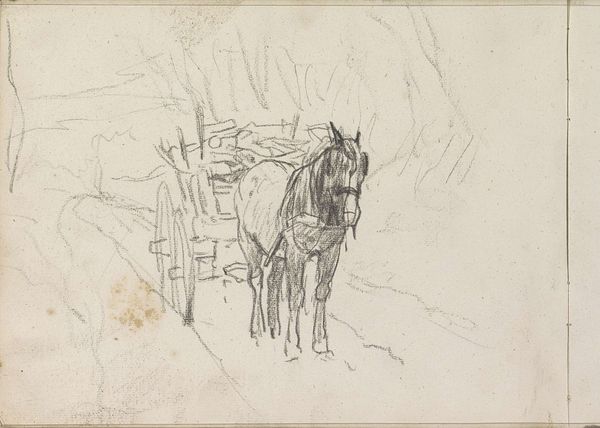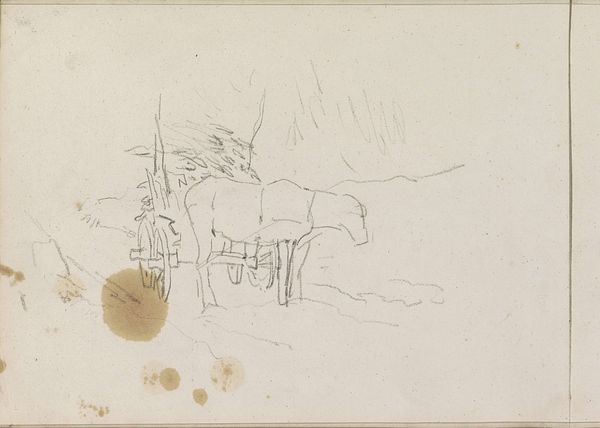
drawing, pencil
#
drawing
#
pencil sketch
#
landscape
#
pencil
#
horse
#
realism
Copyright: Rijks Museum: Open Domain
Curator: Before us is "Trekpaard," a pencil drawing created by Anton Mauve between 1848 and 1888. It's currently housed at the Rijksmuseum. Editor: My first impression is the starkness, that kind of washed-out, weary feeling. It's a sketch, very minimal, yet the weight of the pulling horse seems so tangible. You can almost feel its strain. Curator: Precisely. Mauve uses these stark lines to symbolize rural labor, reflecting the crucial role of animals in agrarian life. Horses, beyond their physical presence, embody a history of cooperation and resilience. Notice how Mauve emphasizes the horse's harness and musculature. Editor: Yes, it's interesting because you don't see a vibrant animal; there's a sort of exhaustion, a feeling that speaks to something beyond just the task at hand. Do you think this depiction echoes any cultural shifts? Curator: It's conceivable that the sketch reflects broader transformations within Dutch society, even echoing a burgeoning realism in art, portraying life stripped bare from romantic idealizations. The pencil's subtle grayscale mirrors a life devoid of intense color. Editor: Maybe this piece wasn't even intended to be seen this way. Maybe it's a private rumination on labor itself. I often find artists use studies as a way to ask fundamental questions with images. Curator: A thought-provoking observation! Sketches often contain unvarnished truths—artists' inquiries into existence, the essence of labour, nature. Even the apparent fragility mirrors fleeting aspects of our connection with working animals and their diminishing significance with modernity. Editor: So true. Even now, the quiet melancholy still resonates. Thanks, it makes me look at these kinds of studies in an interesting new light. Curator: Absolutely, such symbolism extends even now, revealing continuities even amidst change.
Comments
No comments
Be the first to comment and join the conversation on the ultimate creative platform.

